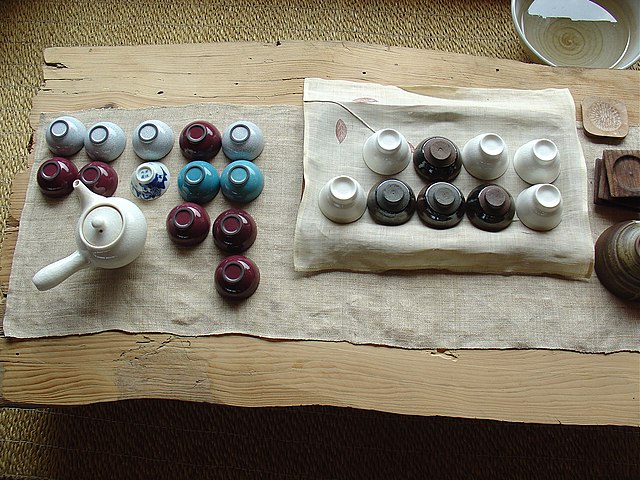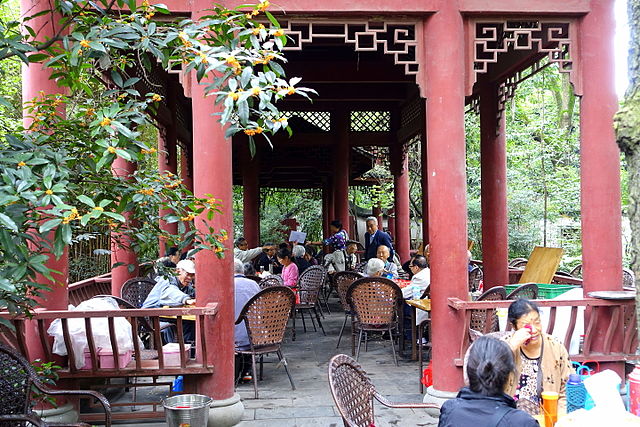The Korean tea ceremony is a traditional form of tea ceremony practiced in Korea. Darye literally refers to "etiquette for tea" or "tea rite" and has been kept among Korean people for over a thousand years. The chief element of the Korean tea ceremony is the ease and naturalness of enjoying tea within an easy formal setting.
Korean tea ceremony
Pottery for tea
A typical setting for a Korean tea ceremony disregarding a contemporary tiled rather than paper covered floor.
Tea ceremony is a ritualized practice of making and serving tea in East Asia practiced in the Sinosphere. The original term from China, literally translated as either "way of tea", "etiquette for tea or tea rite", or "art of tea" among the languages in the Sinosphere, is a cultural activity involving the ceremonial preparation and presentation of tea. Korean, Vietnamese and Japanese tea culture were inspired by the Chinese tea culture during ancient and medieval times, particularly after the successful transplant of the tea plant from Tang China to Korea, Vietnam and Japan by traveling Buddhist monks and scholars in 8th century and onwards.
A Japanese female hostess performs a tea ceremony.
Interior of the Lao She Teahouse in Beijing, China
A Chinese teahouse in Baihuatan Park, Chengdu, Sichuan, China
A Japanese teahouse dating back to the Edo period







